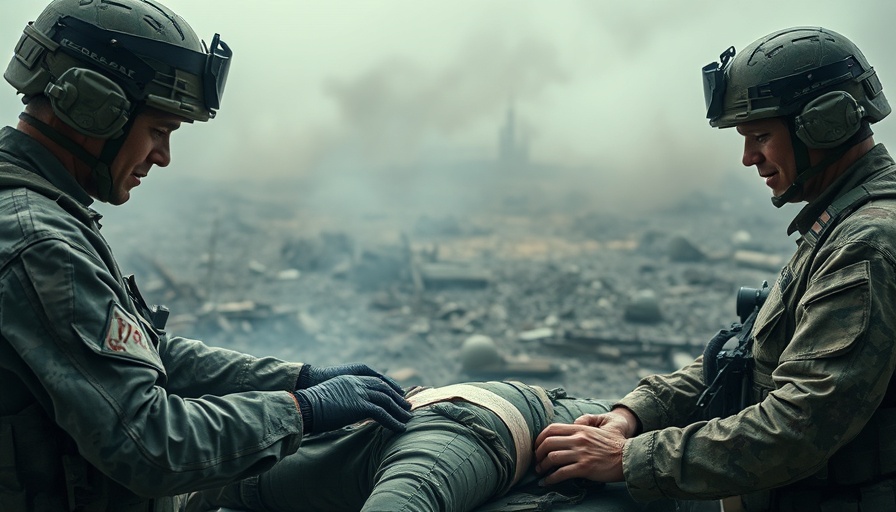
The Future of Emergency Medicine: Augmented Reality on the Battlefield
As conflicts continue to evolve and medical challenges become increasingly complex, the healthcare landscape for military medics is undergoing a transformative shift. With a focus on improving battlefield medicine through technology, researchers at the Johns Hopkins Applied Physics Laboratory (APL) are setting the stage for a revolutionary approach to trauma care in high-pressure environments. The integration of augmented reality (AR) into the toolkit of field medics is poised to provide them with unprecedented capabilities.
Understanding the Challenge of Battlefield Medicine
The primary hurdle faced by medical teams in remote conflict zones is the significant distance from well-equipped hospitals. They must deliver timely care while combating limited resources and constant threats. Bobby Armiger, principal investigator at APL, underscores the urgency: "The potential to save lives increases dramatically when you can pinpoint injuries quickly and accurately in any environment." This need for immediate and effective care during emergencies sparked the interest in developing AR-enhanced medical tools.
Leveraging Augmented Reality: A Game Changer for Medics
The heart of this innovation lies in the statistical shape atlas—a sophisticated mapping technology that predicts the internal orgular anatomy based on external features of the patient. With AR technology overlaying this data directly on a patient’s body, medics can quickly identify key organs and provide tailored care. This approach minimizes the time taken for assessments and interventions, significantly increasing the chances of positive patient outcomes.
Transforming Training and Preparedness with Advanced Technology
Augmented reality is not only changing how medical care is delivered but also how medics are trained. The Pentagon has recognized the importance of utilizing AR as a simulation tool to elevate the competencies of military healthcare professionals. A project led by the University of Miami demonstrated the efficiency of teletraining with AR, equipping medics with the skills needed to perform complex procedures in challenging conditions. This trend highlights an essential aspect of modern combat—the necessity for ongoing education and practice in emergency care techniques.
The Integration of AI: Enhancing Decision-Making in Crisis Situations
Coupled with AR, the introduction of artificial intelligence offers another layer of support in decision-making. AI-driven analytics can evaluate patient data in real-time, providing medics with crucial recommendations during the high-stakes scenarios typical of battlefield trauma. Not only does this technology promise prompt and accurate diagnostic support, it also eases the cognitive load on medics, allowing them to focus on providing care rather than parsing through extensive medical information.
Real-World Applications: Turning Theory into Practice
The combination of AR, AI, and predictive modeling is already yielding positive results. The prototype AR systems being developed have shown the capability to accurately assess the shape of various anatomical structures, laying the groundwork for precision medicine even in the most austere environments. As Armiger states, "By understanding the external size and shape of an individual’s body, we can predict how the internal anatomy should appear." This precision eradicates guesswork and enhances the reliability of field diagnoses.
Future Implications for Medical Readiness and Access to Care
The implications of AR technology extend beyond military use. The rapid advancements in training and operational efficiency may lead to a broader application within civilian healthcare settings, potentially enabling better responses to disasters and other emergencies. Enhanced medical readiness through AR could redefine how care is administered in all areas of healthcare, ultimately impacting outcomes for the general population.
Final Thoughts: A Bright Future for Battlefield Medicine
As these technologies continue to develop, the integration of augmented reality into battlefield medicine represents a significant leap forward in how medics provide care in the face of formidable challenges. The collaboration between technology developers and healthcare providers paves the way for a future where lifesaving interventions can be conducted effectively even in the most chaotic environments. Remaining informed about these advancements will allow healthcare practitioners to adapt their methods to improve patient outcomes, whether on the battlefield or within the hospital walls.
 Add Row
Add Row  Add
Add 




Write A Comment